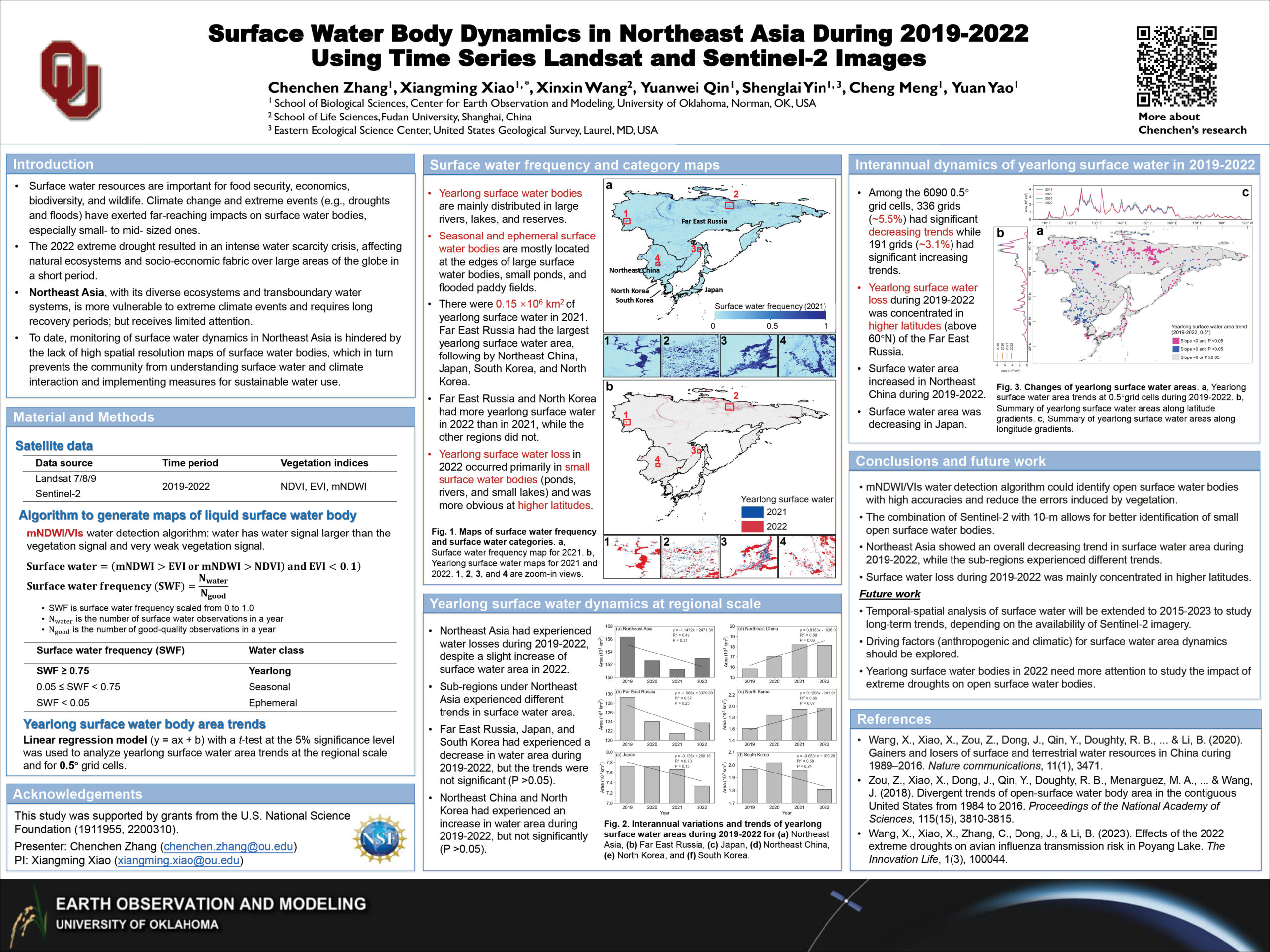By Ellie Leydsman McGinty
The 2023 American Geophysical Union Fall Meeting (AGU23) was held in San Francisco, California, from December 11-15. On an annual basis, AGU meetings convene more than 25,000 researchers, scientists, educators, students, and exhibitors from around the world. As a leading Earth and space science event, AGU fosters learning and collaboration, opens pathways to awareness and discovery, and enhances perspectives across disciplines.
AGU, an organization committed to advancing science, embraced the Year of Open Science by designating the theme of AGU23 as “Wide. Open. Science.” For more than a century, AGU has strived to make data and scientific advancement more accessible and expanded collaborations across disciplines and barriers. AGU has also highlighted the value of open science by transitioning several journals to open access, welcoming a diverse community of scientists, and fostering global partnerships.
During AGU23, NASA supported an exhibit booth that offered Hyperwall presentations, data demonstrations, and materials about NASA Earth and space science. NASA’s Earth Science Division (ESD) was represented by several missions, programs, and offices and provided opportunities to learn about the Earth Information Center, technology, data resources, and early careers. The Landsat Communications and Public Engagement Team participated in the exhibit to communicate the value and benefits of the Landsat program. Information about Landsat satellites, data access, outreach materials, and STELLA handheld spectrometers was conveyed to a range of attendees, from experienced remote sensing scientists to rising undergraduate students.

The Landsat program has repeatedly had a strong presence at AGU meetings and it occupied a prominent position among presenters at AGU23. The role of Landsat in providing foundational and impactful Earth observation data to scientists across the globe has led to research in diverse application areas. In the AGU23 Online Program, Landsat was mentioned in more than 400 poster and oral presentation titles and abstracts, with the greatest representation in the AGU section areas of Biogeosciences, Global Environmental Change, and Hydrology.

A deep dive into presentations and abstracts at AGU23 confirmed the pervasive role of optical and thermal Landsat data in fueling groundbreaking research and addressing complex environmental issues. Throughout the research presented, Landsat data were commonly identified as a primary model input or as a source of model validation. Furthermore, Landsat data have helped transform Earth observation research through data fusion frameworks, as evidenced by the number of studies that integrated Landsat data with data from other Earth observation sensors.
Data fusion–the process of combining complementary datasets to produce more accurate, reliable, and actionable results–has taken hold in the field of remote sensing to reveal hidden patterns or trends, improve understanding of dynamic phenomena, and enable new insights and discoveries. Landsat data are fused with other optical or thermal data, as well as data from different types of sensors, such as LiDAR and radar, to improve the classification of land cover types, capture dynamic changes, and estimate biomass and carbon stock.
At AGU23, studies that integrated Landsat and Sentinel-2 data were widespread. Harmonized Landsat Sentinel-2 (HLS) data, a seamless surface reflectance product generated by NASA, was mentioned in at least 50 presentations. HLS data greatly improve land monitoring capabilities by providing an unprecedented temporal resolution of two to three days. AGU23 presenters frequently identified HLS data as a principal source for mapping land surface dynamics and vegetation phenology. Examples of how HLS data can be use to improve reservoir and surface water monitoring are shown below.
Other Landsat data fusion studies routinely presented at AGU23 used ICESat-2, synthetic aperture radar (SAR), and Global Ecosystem Dynamics Investigation (GEDI) data. Landsat and ICESat-2 data are often paired to investigate the impacts of climate change on the cryosphere and estimate forest aboveground biomass. For example, Christopher Neigh, NASA Landsat 8/9 Project Scientist, gave an oral presentation about a circumboreal forest growth model that fused ICESat-2 data with Landsat stand age data. SAR data, such as Sentinel-1 or PALSAR, have been merged with Landsat data to improve the detection of forested areas and hydrological features. GEDI data, a full waveform LiDAR, are combined with Landsat data to quantify canopy structure, map biomass, and estimate carbon storage. An example of how GEDI data has been be integrated with Landsat time series data to map forest aboveground biomass is provided below.



The AGU23 meeting served as a resounding platform to showcase the enduring impact of the Landsat program on the geoscientific community. For more than five decades, Landsat has revolutionized Earth observation research, and AGU consistently amplifies its invaluable contribution by highlighting innovative studies and scientific progress. The high volume of Landsat-related investigations across diverse disciplines is a testament to the continued relevance and need for sustained, high-quality, moderate-resolution land imaging data.
Related Resources and Reading
+ ExtraDimensional – The Fusion of Landsat & GEDI Data (NASA SVS Video)






